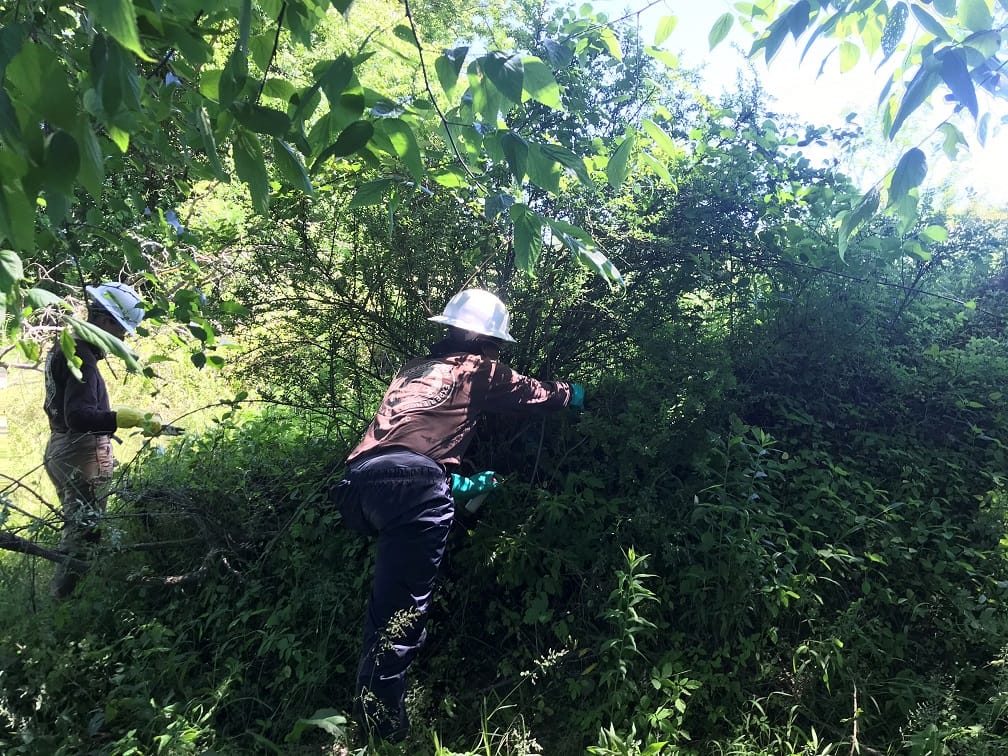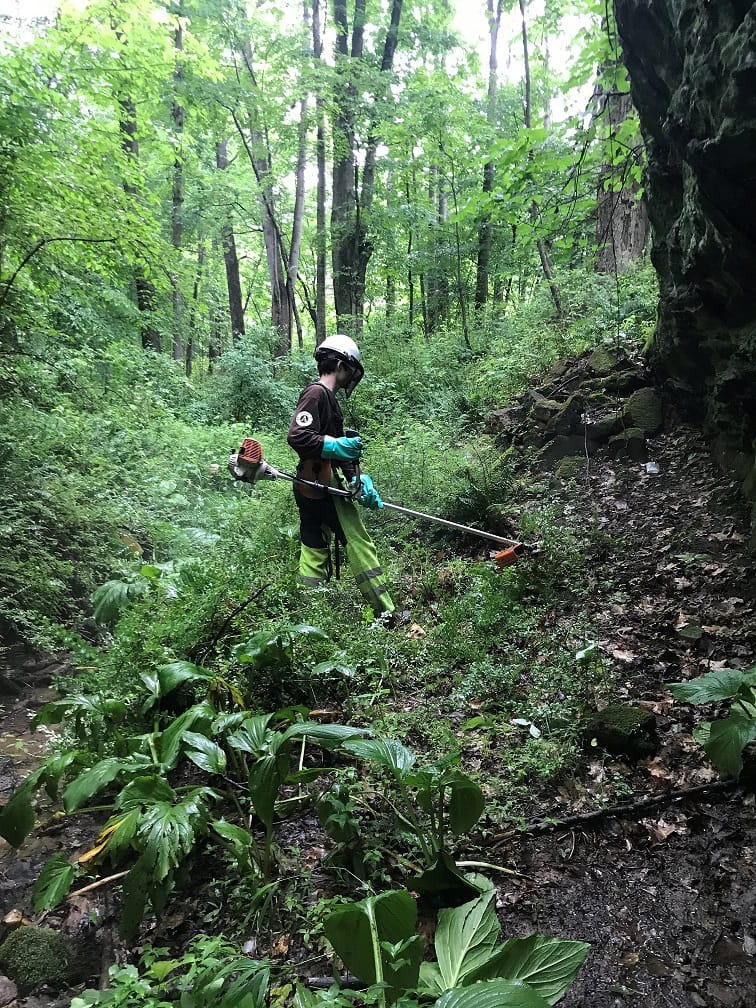The “many little hammers” approach to noxious weed management is not a new concept, but when working around streams and rivers using all the tools in your toolbox is critical.

Weeds are typically non-native plants that may interfere with the management objectives of a particular area of land. Noxious weeds are those weeds that the state has mandated must be managed and controlled by resource agencies and landowners due to their negative economic and environmental impacts.
An invasive-species management plan is a critical part of mitigation banking, because invasive species tend to create monocultures, decreasing biodiversity.
Moving water, along with heavy use by wildlife, livestock and humans, can provide a constant source and opportunity for invasive species re-infestation. Higher soil moisture levels, which help many riparian species to thrive, can also benefit noxious weeds.

The “many little hammers” in the weed management toolbox include: hand-pulling, mowing or weed-eating, girdling, fire, over-seeding, biological controls, targeted grazing, and herbicides. These treatments can be combined, and many of them used in the same area, depending on the species present, and the proximity to streams or wetlands.
Learn More >Contact Trout Headwaters
Inquire About Credit Purchase > Contact Whitewood Farm Mitigation Bank
Customer Focus
Trout Headwaters Inc (THI) is a technology-enabled services firm focused on our client’s unique goals and missions. At THI our guiding principle is always to stay customer-centric. And it is with thanks to each one of our clients that Trout Headwaters has achieved its place in the environmental restoration industry.
